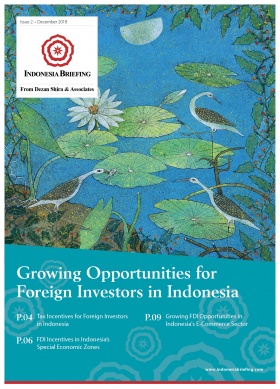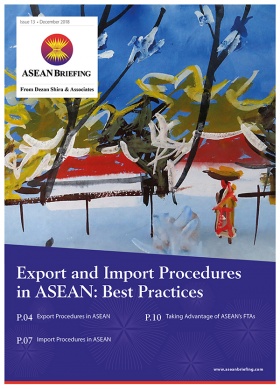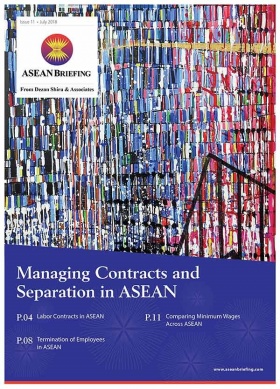The ASEAN Automobile Industry: Top Destinations for Manufacturers
- ASEAN’s automobile industry is set to see continued growth, particularly from its largest markets in Thailand and Indonesia.
- The industry is still dominated by Japanese OEMs that have well-established local supply chains across the region.
- Foreign investors looking to invest in this industry will need a strong market understanding.
The growing automobile industry in ASEAN member countries offers vast opportunities for investments for manufacturers and distributors of automobile components.
Automobile manufacturing and production have skyrocketed in recent years, most notably in Thailand, Indonesia, Vietnam, and Malaysia. Although these ASEAN nations have all focused on automotive industry development, the particular economic niches and consumer bases differ greatly between them.
Foreign investors looking to invest in this industry require strong market understanding and a long-term view with regards to the resources needed to penetrate the competitive ASEAN automobile market.
Thailand
Known as the ‘Detroit of Asia’, Thailand has long been recognized as the primary manufacturer of automobiles among ASEAN countries and has gained traction in the automobile export industry.
The country produced 2 million units in 2018 and exports more than half of its output to more than 100 countries, according to automotive industry portal Marklines. They report that the industry has seen an 8.7 percent year-on-year growth in 2018 and just over 1 million units were sold domestically.
Further, to maintain its competitive-edge amongst ASEAN’s automobile industry in addition to catering to more environmentally conscious consumers, Thailand’s Board of Investment (BOI) initiated the eco-car scheme in 2007 – the first in Southeast Asia.
The scheme provides a multitude of opportunities for foreign investors in Thailand’s automobile manufacturing industry. The BOI ensures an eight-year corporate income tax exemption for automobile companies investing US$168 million or more into environmentally conscious vehicles. Major Japanese OEM make up most eco-cars sold and the BOI has called for the production of 500,000 units within the next five years.
Investors could also take advantage of Thailand’s new stimulus package called Thailand Plus upon entering the automobile industry. Thailand Plus offers 200 percent tax deductions for investors engaged in developing advanced technology as well as those engaging in automation systems and robotics – important incentives designed to advance the automotive manufacturing sector.Indonesia
While Thailand looks outward toward automobile exports, Indonesia benefits from a huge domestic automobile market driven by an emerging middle-class.
The automobile consumer base is expected to grow rapidly, with most purchases occurring in Indonesia’s cities, mainly in Jakarta. Car sales grew by six percent by the end of 2018 – at just over 1.3 million units, with 346,000 exported to markets such as the Philippines, Saudi Arabia, and Vietnam. The government has an ambitious target to export 400,000 units in 2019.
Indonesia’s Low Cost Green Car (LCGC) has found economic success in the domestic market. LCGCs are relatively affordable for its consumer base, priced at US$8,265 (IDR 100 million). LCGC production is regulated by the government, which plans to reduce carbon emission due to transportation by 26 percent within the next five years. LCGCs have a required fuel consumption minimum of 20 kilometers per liter and 85 percent of LCGC parts must be domestically manufactured.
The government has also issued various tax incentives to support this initiative. These include the deductible tax incentives of up to 300 percent for carrying out research and development and 200 percent for engaging in vocational activities.
Vietnam
Vietnam’s automobile manufacturing industry developed slower than its ASEAN neighbors, but has witnessed exponential growth in recent years.
The industry began making progress in the early 2000s, and is on course to be one of ASEAN’s fastest growing automobile industry over the next 20 years. According to the Vietnam Automobile Manufacturers Association, over 288,000 automobiles were sold in Vietnam in 2018, an increase of six percent from 2017.
Vietnam’s automobile industry currently relies heavily on automobile part exports to its neighboring countries; it enjoys a trade surplus of US$900 million in 2018 from exports worth US4.4 billion and imports worth US$3.5 billion. Of the total, 42 percent of exports went to Japan, 16 percent to the US, and 9 percent to China.
While automobile part production has been profitable for Vietnam, the nation is also looking to expand its automobile manufacturing industry. In June 2019, the country signed the European Union Vietnam Free Trade Agreement (EVFTA), which will see 71 percent of duties eliminated in Vietnam exports, including automobiles and automobile components. When combined with Vietnam’s low production costs, the EVFTA could attract some car and parts producers to relocate from Thailand, whose FTA negotiations with the EU are still ongoing.
Vietnam has long been a prime location for foreign investment, as the country has significantly less foreign direct investment restrictions than most surrounding countries. Ventures in the automobile industry can be 100 percent foreign owned and do not need a Vietnamese national as a director. The country also offers some import measures designed to offset the lack of supporting industries in the country.
Malaysia
Malaysia is an important contributor to automobile manufacturing in ASEAN. In 2018, Malaysian automobile manufacturers produced a total of 572,000 vehicles, with 522,000 of them being passenger cars. But Malaysia’s automotive manufacturing landscape is sharply divided between domestically produced vehicles and its foreign competitors.
Automobile producers Proton and Perodua dominate Malaysia’s domestic companies, with 64,700 Protons purchased and 227,200 Perodua purchased in 2018. Proton and Perodua have recently faced foreign competition, however, as Honda and Toyota have gained momentum in the Malaysian market with Honda surpassing Proton’s total sales in 2018.Investors have to also be aware of the Sales and Services Tax (SST) scheme, which was introduced in 2018, and replaced the Goods and Service Tax (GST). This resulted in a 10 percent sales tax on automobiles, and saw prices of imported vehicles as well as those manufactured in Malaysia increase when it was implemented.
In 2018, Malaysia’s National Automotive Policy (NAP) announced that the third national car will be an energy-efficient vehicle (EEV). The NAP has committed to incentivizing the production of EEVs, regardless of investment amount or engine capacity, will now automatically receive grants, tax exemptions, and manufacturing licenses.
Looking ahead
It is difficult to spate the automotive manufacturing industry from the strong growth ASEAN countries have experienced over the long term. Increasingly, ASEAN countries are competing with each other to establish investment and tax incentives for the automotive industry in their respective countries – this will likely create greater opportunities for foreign investors that would like to enter the ASEAN market.
The main competition for foreign investors will be between Thailand and Indonesia, who are both trying to lure investors with their potential to be the regions’ automobile production base. Both have issued tax breaks and other incentives to attract foreign investment, mostly Japanese and more recently, Chinese investors.
Furthermore, foreign investors considering which market will be the most receptive will need to overcome the dominance of Japanese original equipment manufacturers (OEMs). Overall, however, the ASEAN automobile industry has plenty of momentum, particularly as the bloc expands its FTAs and becomes better integrated with the global automobile supply chain.
Foreign investors that are considering setting up in in the region should consider conducting some market entry analysis to better understand how investment and trade laws will impact investment, as well as other concerns such as operational costs, supplier availability, and the nuances of the local market.
This article was originally published on July 15, 2015 and was updated on October 1, 2019.
About Us
ASEAN Briefing is produced by Dezan Shira & Associates. The firm assists foreign investors throughout Asia and maintains offices throughout ASEAN, including in Singapore, Hanoi, Ho Chi Minh City and Jakarta. Please contact us at asia@dezshira.com or visit our website at www.dezshira.com.








